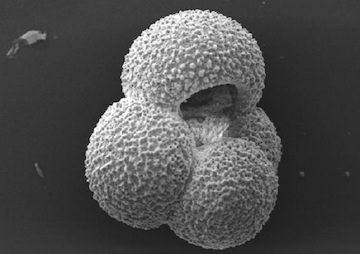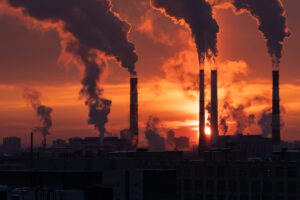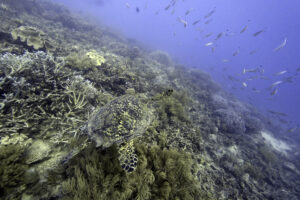Ancient Shells Offer Evidence of How Ice Age Ended
Ocean sediment reveals that release of carbon stored deep in the sea is linked to the rise in atmospheric CO2 that caused the world to warm.
By Tim Radford, Climate News Network

Sediment cores that were analysed were rich in the shells of the tiny marine organism Globigerina bulloides. (Mariana T. Horigome / Autonomous University of Barcelona)
This Creative Commons-licensed piece first appeared at Climate News Network.
LONDON — Scientists believe they may have cracked the mystery of the end of the last ice age. The temperatures suddenly soared, and the glaciers went into retreat, because the deep southern ocean released huge quantities of carbon dioxide.
And the convincing answers have been delivered by analysis of the composition of calcium carbonate shells of ancient marine organisms.
The link between human burning of fossil fuels and the steady rise in atmospheric carbon dioxide levels was proposed more than a century ago and firmly established in the last 30 years.
But the ups and downs of planetary temperatures before the emergence of human civilisation are harder to explain. Fossil evidence suggests a link with carbon dioxide levels, but not necessarily a cause.
Bygone climates
Now paleoceanographer Miguel Martínez-Botí, from the University of Southampton, UK, and ocean and climate change researcher Gianluca Marino, from the Australian National University, report in Nature that they found their evidence in sediment cores — in effect, annual records of bygone climates — rich in the shells of tiny foraminifera called Globigerina bulloides.
This is a species that flourishes in conditions of high nutrients, acting as a kind of biological pump, gulping carbon from the atmosphere.
They found that high concentrations of carbon dioxide dissolved in surface waters of the southern Atlantic Ocean and the eastern equatorial Pacific coincided with rises in atmospheric CO2 at the end of the last ice age.
The implication is that these regions were the source of the carbon dioxide to the atmosphere.
“Our findings support the theory that a series of processes
in the Southern Ocean changed the amount of carbon
in the deep sea”
At their coldest, during the ice ages, carbon dioxide levels fell to 185 parts per million. During the interglacials, when the world warmed and lions and hyenas roamed the plains of Europe, the carbon dioxide levels rose to 280 ppm.
Right now, thanks to human activity, CO2 levels are rising ominously towards 400 ppm.
The oceans are home to about 60 times more carbon than the atmosphere and can, it seems, surrender it rapidly.
“The magnitude and rapidity of the swings in atmospheric CO2 across the ice age cycles suggest that changes in ocean carbon storage are important drivers of natural atmospheric CO2 variations,” Dr Martínez-Botí says.
“Our findings support the theory that a series of processes operating in the southernmost sector of the Atlantic, Pacific and Indian oceans, a region known as the Southern Ocean, changed the amount of carbon in the deep sea.
Into the abyss
“While a reduction in communication between the deep sea and the atmosphere in this region potentially locks carbon away from the atmosphere into the abyss during ice ages, the opposite occurs during warm interglacial periods.”
To arrive at their conclusion, the scientists had to analyse subtle evidence from the isotopic composition of the carbonate shells, and then use mathematical techniques to reconstruct a story of a great, faraway sigh of carbon dioxide from the ocean to the atmosphere.
The finding, based on calculated probabilities, is incomplete as there may have been other forces also at play.
Gavin Foster, associate professor in isotope geochemistry at the University of Southampton, says: “While our results support a primary role for the Southern Ocean processes in these natural cycles, we don’t yet know the full story. Other processes operating in other parts of the ocean, such as the north Pacific, may have an additional role to play.”
Your support matters…Independent journalism is under threat and overshadowed by heavily funded mainstream media.
You can help level the playing field. Become a member.
Your tax-deductible contribution keeps us digging beneath the headlines to give you thought-provoking, investigative reporting and analysis that unearths what's really happening- without compromise.
Give today to support our courageous, independent journalists.






You need to be a supporter to comment.
There are currently no responses to this article.
Be the first to respond.